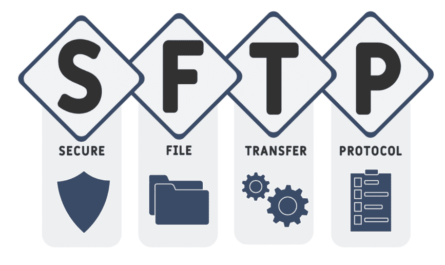Digital Asset Management (DAM) is crucial in today’s digital landscape. Individuals and organizations often face challenges in managing an ever-growing volume of digital content. This article aims to provide practical tips for efficient digital asset management. We will explore tools and strategies to organize, store, and retrieve digital assets effectively.
Page Contents
Define Digital Assets
Digital assets are more than just files; they are the lifeblood of modern businesses. This term encompasses everything from images, videos, and audio files to documents, spreadsheets, and even emails. In our digital age, these assets play a pivotal role, forming the backbone of marketing, communication, and operational strategies across diverse industries. Understanding what constitutes a digital asset is crucial for effective management. It’s about recognizing the value these files bring and ensuring they are organized, accessible, and secure. Whether in media, education, or any sector, digital assets are indispensable tools that drive engagement, inform decisions, and preserve valuable information.
Why Organize Digital Assets?
The chaos of poorly managed digital assets can significantly hinder productivity and creativity. Imagine trying to locate a crucial document in a maze of poorly named files or deciphering which version of a project is the most current. The consequences can range from minor frustrations to substantial financial losses. Conversely, well-organized assets streamline workflows, enhance collaboration, and ensure that critical information is readily available. Consider the case of a marketing team efficiently rolling out a campaign, thanks to readily accessible and well-categorized digital assets. This not only saves time but also ensures that the creative process flows unhindered. Organizing digital assets is not just about tidiness; it’s about empowering businesses to operate at their peak efficiency. This is why you should consider enlisting safe eVaults.
Choose the Right DAM System

Selecting the appropriate Digital Asset Management (DAM) system is fundamental to harnessing the full potential of your digital assets. A suitable DAM system acts as the central nervous system of your digital asset repository, orchestrating storage, retrieval, and distribution efficiently. When evaluating DAM software, consider factors such as user-friendliness, scalability, integration capabilities, and security features. It’s essential to choose a system that aligns with your organization’s specific needs, whether you’re a small creative team requiring robust collaboration tools or a large corporation needing advanced security and compliance features. Remember, the right DAM system is not just a storage solution; it’s a tool that should grow and evolve with your business, enhancing productivity and fostering innovation.
Asset Categorization
Effective categorization is the cornerstone of a robust Digital Asset Management system. It transforms a chaotic collection of files into an organized, intuitive library. Begin by establishing a logical and consistent naming convention that everyone in your organization understands and follows. This might involve including dates, project names, or version numbers in file names. Beyond naming, harness the power of metadata. Metadata are details about the files, like the creator’s name, creation date, or file type, making assets searchable and sortable. Implementing a meticulous categorization system enhances efficiency, ensuring that the right assets are accessible to the right people at the right time, thus streamlining the workflow and reducing the time spent on searching.
Version Control

In the realm of digital assets, managing versions is vital to maintain the integrity and relevance of your content. Version control is about tracking the evolution of a digital asset, ensuring that everyone is working on the latest version and that historical versions are archived for reference. This practice avoids confusion, prevents work duplication, and safeguards against the loss of important information due to overwriting. Establish clear protocols for naming and storing different versions of assets. Utilize features offered by DAM systems to automate version tracking and control, ensuring a coherent and efficient management process. Proper version control not only brings peace of mind but also significantly enhances collaborative efforts.
Permissions and Access Control
Implementing robust permissions and access control mechanisms is crucial for protecting your digital assets. It involves defining who can view, edit, or distribute each asset. This not only safeguards sensitive information but also ensures that team members have the right tools at the right time, enhancing productivity and preventing costly errors. Role-based access control (RBAC) is a popular approach where permissions are assigned based on the user’s role within the organization. This method provides a balance between security and accessibility, ensuring that each team member has access to the assets they need while preventing unauthorized use. Thoughtfully setting up access permissions is a critical step in maintaining the integrity and security of your digital assets.
Backup and Recovery

In the digital world, the importance of regularly backing up your assets cannot be overstated. It’s your safety net against data loss due to hardware failures, cyber-attacks, or human errors. Embrace a multi-pronged backup strategy that includes cloud, local, and offsite backups. This diversified approach ensures that if one backup fails, you have other layers to fall back on. Establish a clear, regular schedule for backups and stick to it. Additionally, formulate a comprehensive recovery plan. This plan should outline steps to restore lost data swiftly and minimize downtime. Remember, a robust backup and recovery strategy is not just about prevention; it’s about ensuring business continuity even in the face of unforeseen challenges.
Metadata and Keywords
Metadata and keywords are the unsung heroes of digital asset management. They turn a sprawling collection of files into a well-organized, easily searchable library. Metadata, which includes information like the asset’s creator, creation date, and format, adds context to your files, making them more than just names on a screen. Keywords, on the other hand, are about discoverability. They are the terms that users will likely search for when looking for assets. Thoughtful metadata and keyword strategies enhance the findability of assets, dramatically reducing the time spent searching and increasing the overall productivity. Cultivating a habit of adding comprehensive metadata and relevant keywords is a small investment that pays off significantly in streamlined operations.
Digital Asset Workflow
A well-defined digital asset workflow is essential for maintaining order and efficiency. It outlines the journey an asset takes from creation to approval, and finally, to distribution. A streamlined workflow ensures that assets move smoothly through each stage, with clear checkpoints and accountability at each step. Tailor your workflow to fit the unique needs of your organization and industry. For a marketing team, this might mean incorporating steps for brand compliance checks. For a software company, it might involve stages for code review. Regardless of the specifics, a clear, well-structured workflow minimizes bottlenecks, ensures quality, and keeps projects on track.
Training and User Adoption

The success of any Digital Asset Management system hinges on user adoption. Even the most sophisticated system is ineffective if the team doesn’t use it properly. Invest time in training your employees, ensuring they understand how to use the DAM system effectively. This involves not just technical training but also conveying the benefits and importance of proper digital asset management. Additionally, gather feedback and be open to making adjustments. User adoption is not a one-time event but an ongoing process. Regularly engaging with your team, addressing their concerns, and incorporating their feedback fosters a culture of continuous improvement, ensuring that your DAM system remains a valuable, integral tool.
Continuous Improvement
The digital landscape is ever-evolving, and so should your approach to digital asset management. Commit to regular evaluation and improvement of your DAM practices. Solicit feedback from users, analyze usage patterns, and stay abreast of the latest technologies and best practices. This proactive approach ensures that your DAM system not only meets the current needs of your organization but is also poised to adapt to future challenges and opportunities. Remember, continuous improvement is not just about fixing what’s broken; it’s about seizing new possibilities, enhancing efficiency, and driving innovation. By fostering a culture of continual learning and adaptation, you ensure that your digital asset management practices remain cutting-edge, delivering value and competitive advantage.







